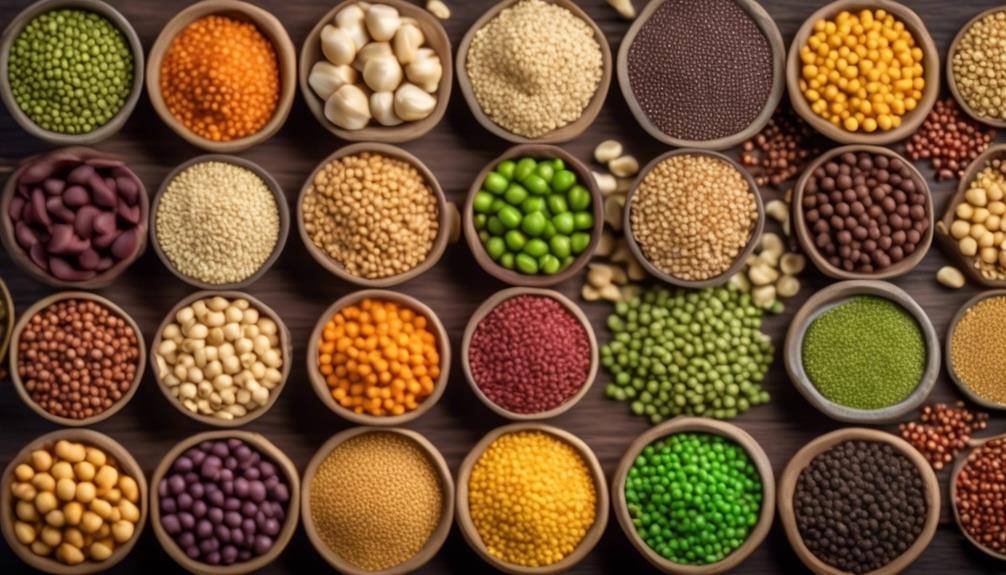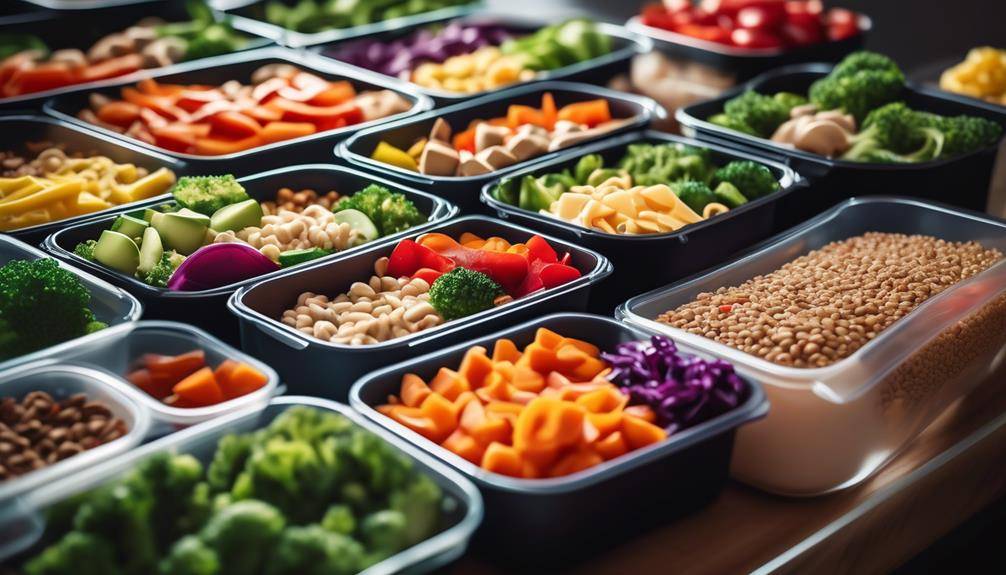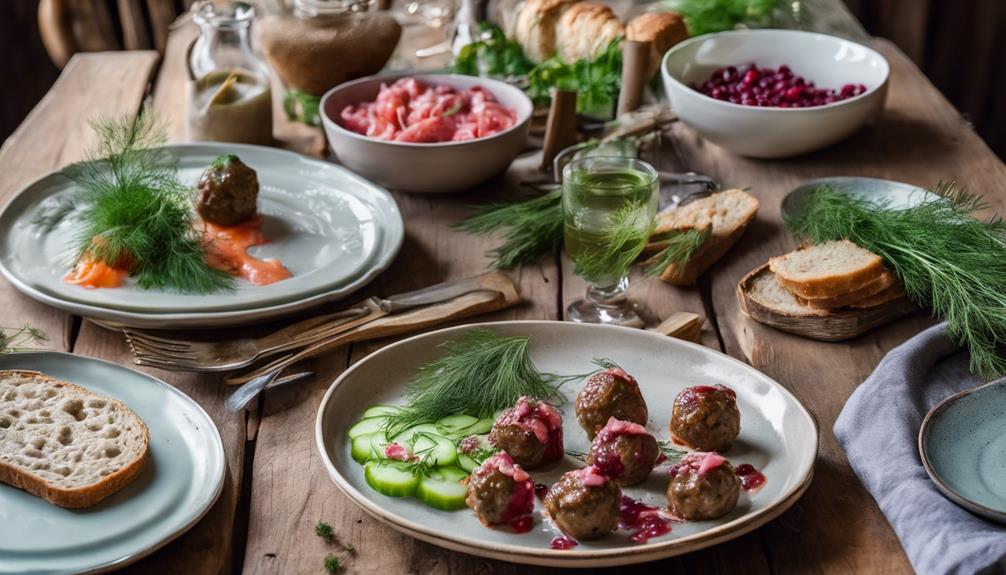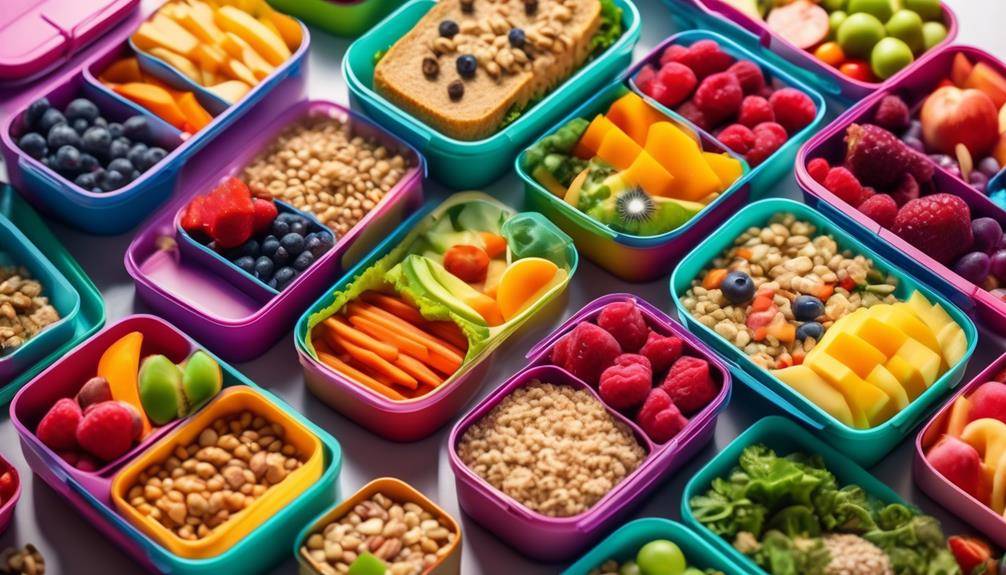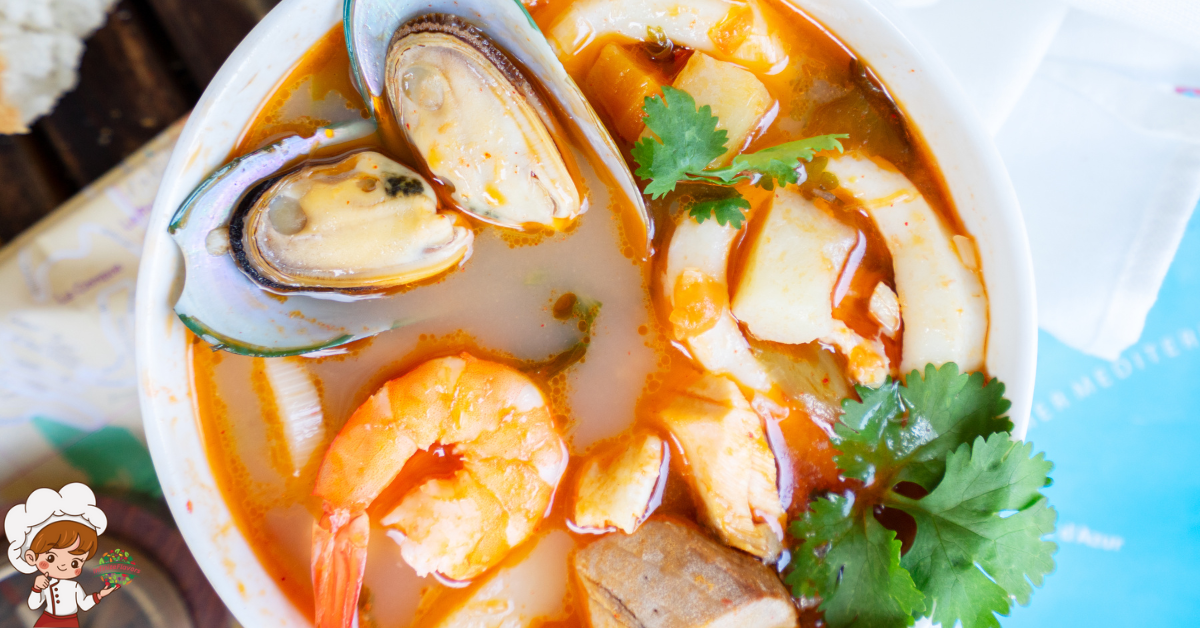How To: Top Gluten-Free Diet Tips
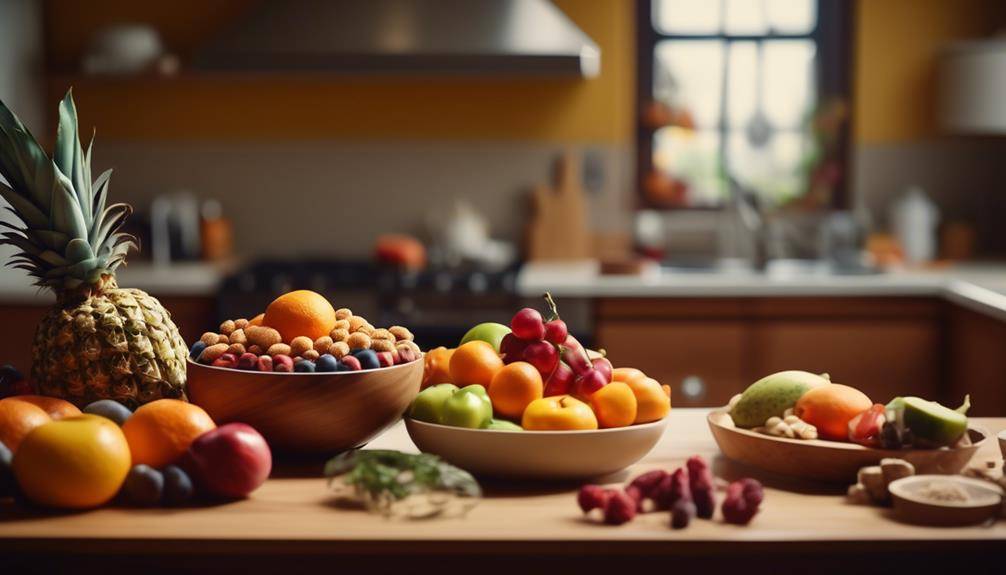
Top Gluten-Free Diet Tips; Imagine you’re a tightrope walker, carefully crossing a high wire with precision and poise. Just as you maintain balance and focus, navigating the gluten-free diet can feel like a delicate act. With the rise in gluten-free awareness, it’s essential to have a firm grasp on the Top Gluten-Free Diet Tips that will help you successfully navigate this dietary path. From understanding hidden sources of gluten to staying prepared when eating out, this discussion will provide you with valuable insights and practical advice to ensure your journey towards a gluten-free lifestyle is both smooth and satisfying.
Know Your Gluten-Free Grains
To successfully navigate a gluten-free diet, it is essential to familiarize yourself with the various gluten-free grains available to you. Gluten-free grain varieties offer a wide range of options, allowing you to diversify your diet and still enjoy delicious meals. Here are some popular gluten-free grains and cooking methods to help you make informed choices.
Quinoa is a versatile grain that is rich in protein, fiber, and essential nutrients. It can be used as a substitute for rice or couscous and can be cooked by simmering it in water or broth until tender. Millet is another gluten-free grain that is often used in baking and can be cooked by boiling it in water or broth. It has a mild, nutty flavor and makes a great addition to salads or as a side dish.
Buckwheat is not related to wheat and is gluten-free. It can be used in a variety of ways, such as in pancakes, noodles, or as a base for porridge. Amaranth is a tiny seed that can be cooked similarly to rice and used in soups, stews, or as a breakfast cereal.
When cooking gluten-free grains, it is important to rinse them thoroughly before cooking to remove any debris or natural coatings. Follow the cooking instructions on the package to ensure proper cooking times and ratios of water to grain. Additionally, consider adding spices, herbs, or seasonings to enhance the flavors of your gluten-free grain dishes.
Take Stock of Your Pantry
First, check the expiration dates on all your pantry items to ensure they are still safe to consume. Next, take the time to read labels and identify any hidden sources of gluten in your pantry, such as sauces, seasonings, or condiments. Finally, replace any gluten-containing products with gluten-free alternatives to ensure your pantry is stocked with safe options for your gluten-free diet.
Check Expiration Dates
Check the expiration dates on all the items in your pantry to ensure that you are consuming fresh and safe gluten-free products. Expiration date awareness is crucial in maintaining a gluten-free diet. Expired products may not only have a compromised taste and texture but can also pose potential health risks. When checking expiration dates, pay attention to the “use by” or “best by” dates. These indicate the date at which the product is at its peak quality.
Additionally, be aware of proper food storage tips to extend the shelf life of your gluten-free items. Store them in a cool, dry place away from direct sunlight and moisture. Avoid storing products near strong-smelling foods, as they can absorb odors. Regularly taking stock of your pantry and checking expiration dates will ensure that you are always consuming fresh and safe gluten-free products.
Identify Hidden Gluten
When taking stock of your pantry, it is important to be vigilant in identifying hidden sources of gluten. Even though a product may appear to be gluten-free, it could still contain gluten in the form of hidden ingredients. To ensure your pantry is truly gluten-free, follow these tips:
- Read ingredient labels carefully: Look out for common gluten-containing ingredients such as wheat, barley, rye, and malt.
- Be aware of cross-contamination: Some products may be processed in facilities that also handle gluten-containing ingredients, leading to potential cross-contamination.
- Watch out for hidden gluten sources: Gluten can be found in unexpected places like soy sauce, salad dressings, and even certain medications.
Replace With Gluten-Free
To ensure your pantry is stocked with gluten-free options, it’s important to replace any products that contain hidden sources of gluten. Start by taking stock of your pantry and checking labels for any ingredients that may contain gluten, such as wheat, barley, or rye. Replace these items with gluten-free substitutes, which are widely available in most grocery stores these days. Look for gluten-free flours, pasta, bread, and snacks to replace their gluten-containing counterparts.
When cooking, opt for gluten-free cooking techniques, such as using cornstarch as a thickener instead of flour or using gluten-free breadcrumbs for coating meats or vegetables. By taking these steps, you can ensure that your pantry is filled with gluten-free options, making it easier to stick to your gluten-free diet.
Read Labels Carefully
When following a gluten-free diet, it is crucial to read labels carefully. Ingredient awareness is key, as many products contain hidden sources of gluten. Look out for ingredients like wheat, barley, and rye, as well as their derivatives, and be cautious of cross-contamination risks. To ensure your safety, opt for certified gluten-free products that have undergone rigorous testing and meet strict standards.
Ingredient Awareness
For better understanding and adherence to a gluten-free diet, it is crucial to carefully read labels and be aware of the ingredients present. This is because gluten can hide in unexpected places, making it important to pay close attention to the ingredient list. To help you navigate gluten-free cooking and ingredient substitution, here are some tips:
- Look for gluten-free alternatives: Many gluten-containing ingredients have gluten-free substitutes available, such as using almond flour instead of wheat flour or tamari instead of soy sauce.
- Familiarize yourself with gluten-free cooking techniques: Learning about cooking methods that naturally avoid gluten, such as grilling, roasting, or steaming, can expand your options and creativity in the kitchen.
- Be cautious of cross-contamination: Even if a product claims to be gluten-free, it can still be contaminated if it is produced in a facility that also handles gluten. Look for labels that indicate certified gluten-free to ensure safety.
Hidden Gluten Sources
Careful reading of labels is essential to identify hidden sources of gluten in food products. While some products may be labeled as “gluten-free,” it’s important to remain vigilant as hidden sources of gluten can still be present. Cross contamination risks are a major concern, as even a small amount of gluten can trigger symptoms in individuals with celiac disease or gluten sensitivity. Some common hidden gluten sources include sauces, condiments, and processed foods, which may contain ingredients like modified food starch, malt, or hydrolyzed wheat protein.
Additionally, certain medications and supplements can also contain hidden gluten. To ensure that your diet remains gluten-free, make it a habit to carefully read labels before purchasing or consuming any food products. If in doubt, contact the manufacturer to inquire about their gluten-free practices.
Certified Gluten-Free Products
To ensure that your gluten-free diet remains intact, it is crucial to pay close attention to the labels of certified gluten-free products. With so many options available in the market, it’s important to know how to identify products that meet gluten-free labeling standards. Here are some tips to help you navigate the world of certified gluten-free options:
- Look for a certification logo: Certified gluten-free products often display a logo or seal on their packaging, indicating that they have undergone testing and meet the required standards.
- Read the ingredient list: Even if a product is labeled gluten-free, it’s important to read the ingredient list to check for any potential sources of gluten.
- Be wary of cross-contamination: Some products may be prepared in facilities that also handle gluten-containing ingredients. Look for labels that specify if the product is made in a dedicated gluten-free facility.
Be Cautious of Cross-Contamination
Take precautions to prevent cross-contamination when following a gluten-free diet. Cross-contamination occurs when gluten-containing products come into contact with gluten-free foods, leading to the transfer of gluten and potentially causing harm to individuals with gluten sensitivities or celiac disease. To maintain a safe gluten-free kitchen, there are a few essential steps you should follow.
Firstly, it is crucial to have separate cooking utensils and equipment for gluten-free and gluten-containing foods. This includes cutting boards, toasters, colanders, and baking trays. By using dedicated gluten-free kitchen essentials, you can minimize the risk of cross-contamination. Additionally, consider color-coding your utensils, using different colors for gluten-free and non-gluten-free items, to further reduce the chance of mixing them up.
Furthermore, when preparing gluten-free meals, ensure that you clean all surfaces thoroughly before use. This includes countertops, stovetops, and any other areas that may have come into contact with gluten. Use separate sponges or cloths for cleaning gluten-free and non-gluten-free surfaces to avoid cross-contamination.
When storing gluten-free ingredients, it is important to keep them separate from gluten-containing products. Use different shelves or storage areas to prevent accidental mixing. Labeling containers and clearly marking them as gluten-free can also be helpful.
Lastly, when dining out, be sure to communicate your dietary needs to the restaurant staff. Ask about their cross-contamination precautions and if they have a dedicated gluten-free area in the kitchen. It is essential to ensure that the restaurant takes the necessary steps to prevent cross-contamination when preparing your meal.
Educate Yourself on Hidden Sources of Gluten
Hidden sources of gluten can be found in a variety of foods and ingredients, making it important to educate yourself to effectively follow a gluten-free diet. While many people may think of obvious gluten-containing foods like bread and pasta, gluten can also be lurking in unexpected places. To ensure you are fully aware of hidden gluten sources, here are three sub-lists to keep in mind:
- Be cautious of:
- Sauces and condiments: Many sauces, such as soy sauce and salad dressings, can contain gluten as a thickening agent.
- Processed meats: Deli meats, sausages, and hot dogs may contain gluten as fillers or binders.
- Soups and broths: Pre-made soups and broths often contain gluten as a thickener or in the form of added ingredients.
- Check ingredient labels for:
- Modified food starch: This common ingredient can be derived from wheat and may contain gluten.
- Barley malt: Used in some sweeteners and flavorings, barley malt is a hidden source of gluten.
- Hydrolyzed vegetable protein: This ingredient can be made from gluten-containing grains, so be cautious when it appears on a label.
- Be mindful of cross-contamination:
- Shared utensils and cooking surfaces: Even if a dish is gluten-free, it can become contaminated if cooked or prepared alongside gluten-containing foods.
- Bulk bins and self-serve stations: Cross-contamination can occur when scoops or containers from gluten-containing products are used in the vicinity of gluten-free options.
- Toaster and cutting boards: These items can retain gluten particles, so it’s important to use separate ones for gluten-free food preparation.
Prioritize Whole, Unprocessed Foods
When following a gluten-free diet, it is crucial to prioritize whole, unprocessed foods to ensure a healthy and well-rounded approach to your eating habits. Whole foods refer to foods that are in their natural state and have not undergone significant processing or refining. These foods are rich in essential nutrients and can provide numerous health benefits. On the other hand, processed foods are often stripped of their nutrients and may contain additives, preservatives, and hidden sources of gluten that can be harmful to those with gluten intolerance or sensitivity.
By choosing whole foods, you can eliminate the risk of unintentionally consuming gluten and improve your overall health. Fresh fruits and vegetables, lean meats, fish, poultry, legumes, nuts, and seeds are excellent examples of whole foods that are naturally gluten-free. These foods are packed with vitamins, minerals, and fiber, which are essential for maintaining a healthy gut and promoting optimal digestion.
In addition to being gluten-free, whole foods are generally lower in added sugars, unhealthy fats, and sodium compared to processed foods. They can help you maintain a healthy body weight, reduce the risk of chronic diseases such as heart disease and diabetes, and provide sustained energy throughout the day. Incorporating whole foods into your gluten-free diet can also enhance the flavors and textures of your meals, making them more enjoyable and satisfying.
To prioritize whole, unprocessed foods, start by shopping in the perimeter of the grocery store. This is where you will find fresh produce, meats, and dairy products. Avoid the middle aisles, as they are typically filled with processed foods and snacks. When purchasing packaged foods, always read labels carefully to ensure they are gluten-free and contain minimal additives. Opt for whole grains such as quinoa, brown rice, and gluten-free oats instead of refined grains like white rice or wheat-based products.
Experiment With Gluten-Free Baking Alternatives
Now it’s time to explore the world of gluten-free baking alternatives. When it comes to flour substitutes for baking, options like almond flour, coconut flour, and rice flour can provide a nutritious and delicious alternative to traditional wheat flour. However, it’s important to keep in mind that gluten-free baking can be a bit trickier, so here are some tips for successful gluten-free baking to help you achieve the best results possible.
Flour Substitutes for Baking
Experiment with different gluten-free baking alternatives to find the perfect flour substitutes for your recipes. When it comes to gluten-free baking, there are several flour alternatives you can try that will yield delicious results. Here are three options to consider:
- Almond flour: Made from ground almonds, almond flour is a popular choice for gluten-free baking. It adds a slightly nutty flavor and a moist texture to your baked goods. Almond flour works well in cookies, cakes, and muffins.
- Coconut flour: Derived from dried coconut meat, coconut flour is another great gluten-free option. It is high in fiber and gives a light and airy texture to baked goods. Coconut flour works well in pancakes, bread, and pie crusts.
- Oat flour: Made from ground oats, oat flour is a versatile gluten-free flour substitute. It has a mild flavor and adds a soft and chewy texture to your baked goods. Oat flour works well in cookies, bread, and muffins.
Tips for Successful Baking
To ensure successful gluten-free baking, it’s important to explore different alternatives and discover the perfect flour substitutes for your recipes. When it comes to gluten-free baking, there are numerous options available that can help you achieve the same delicious results. One popular alternative is almond flour, which adds a rich, nutty flavor to your baked goods.
Another option is coconut flour, which has a slightly sweet taste and is high in fiber. You can also try using a blend of gluten-free flours, such as a combination of rice flour, tapioca flour, and potato starch. Experimenting with different gluten-free baking alternatives will help you find the perfect texture and taste for your favorite recipes. Remember to follow the specific instructions for each alternative to ensure the best results.
Plan Your Meals and Snacks
Start by creating a weekly meal plan that includes a variety of gluten-free options for all your meals and snacks. Meal planning is a crucial step in maintaining a gluten-free diet and ensuring that you have nutritious and delicious options available at all times. Here are some tips to help you plan your meals and snacks effectively:
- Make a list of gluten-free ingredients: Before you start planning your meals, take some time to research and make a list of gluten-free ingredients that you enjoy. This will give you a good starting point when choosing recipes and creating your meal plan.
- Choose a variety of foods: It’s important to include a wide range of gluten-free foods in your meal plan to ensure that you’re getting all the nutrients your body needs. Include plenty of fruits, vegetables, lean proteins, and whole grains like quinoa or brown rice.
- Prep ahead of time: To make your meal planning and preparation easier, consider prepping some ingredients or meals in advance. Chop up vegetables, cook grains, or make a big batch of gluten-free snacks that you can grab on the go.
Stay Prepared When Eating Out
When dining out, it is important to be prepared by following these tips for a gluten-free diet. Eating out can be challenging when you have dietary restrictions, but with a little planning and knowledge, you can still enjoy a delicious meal without gluten. One of the first things you can do is to research and choose restaurants that offer gluten-free options. Many restaurants now cater to gluten-free diets and have dedicated menus or options available. Before you go, check their website or call ahead to ensure they can accommodate your needs.
Another important tip is to be proactive and plan ahead. If you know you will be eating out, try to have a light snack before going to the restaurant. This will help curb your hunger and prevent you from making impulsive decisions that may not be gluten-free. Additionally, consider bringing your own gluten-free sauces or dressings to add flavor to your meal. It’s also a good idea to have a meal prep mentality and think about what you can eat rather than what you can’t. Look for dishes that naturally do not contain gluten, such as grilled meats, fish, salads, and vegetables.
When ordering, be clear and specific about your dietary restrictions. Ask questions about how the food is prepared and if there’s a risk of cross-contamination. It’s crucial to communicate your needs to the staff to ensure they understand the importance of avoiding gluten. Lastly, don’t be afraid to ask for modifications to the menu items. Many dishes can be easily adapted to be gluten-free by substituting ingredients or removing gluten-containing elements.
Take Care When Traveling
As you venture out on your travels, maintaining a gluten-free diet requires careful consideration and planning to ensure you stay on track with your dietary restrictions. Traveling can present unique challenges, but with a few precautions and tips, you can navigate unfamiliar territory while still enjoying gluten-free options. Here are some gluten-free travel tips to help you stay safe and satisfied:
- Research your destination: Before you embark on your journey, take the time to research the local cuisine and familiarize yourself with gluten-free options available in the area. Look for restaurants that offer gluten-free menus or have a reputation for accommodating dietary restrictions.
- Pack gluten-free snacks: To avoid hunger pangs and potential cross-contamination, pack a variety of gluten-free snacks for your travels. Granola bars, nuts, and dried fruits are convenient options that can keep you satisfied between meals.
- Communicate your dietary needs: When booking accommodations or making restaurant reservations, inform them about your gluten-free diet. This will allow them to make necessary preparations and ensure that suitable options are available to you.
- Bring gluten-free translation cards: If you are traveling to a foreign country where language barriers may exist, consider carrying gluten-free translation cards. These cards can help you communicate your dietary needs to restaurant staff and ensure that your meals are prepared safely.
- Be cautious with cross-contamination: Even if a dish is labeled gluten-free, cross-contamination can still occur in shared kitchens or through utensils. Be vigilant and ask questions about food preparation practices to minimize the risk of consuming gluten.
Seek Support and Join a Gluten-Free Community
To enhance your gluten-free journey, consider seeking support and becoming part of a vibrant gluten-free community. Joining a community of individuals who share your dietary restrictions can provide invaluable support, encouragement, and resources to help you navigate the challenges of living gluten-free.
One of the greatest advantages of joining a gluten-free community is the opportunity to connect with others who have faced similar experiences. By sharing your journey with like-minded individuals, you can gain insights, tips, and strategies for managing your gluten-free diet effectively. These communities often have online forums or social media groups where you can ask questions, seek advice, and share your own experiences.
Additionally, being part of a gluten-free community can help you discover new recipes and meal ideas. Members often exchange recipes, recommend gluten-free products, and share their culinary adventures. This can be particularly helpful if you’re feeling stuck or limited in your meal options. With the collective knowledge of the community, you’ll have access to a wealth of delicious and gluten-free recipes that can add variety and excitement to your meals.
Finding a gluten-free community is easier than ever. You can search online for local support groups, join social media communities, or attend gluten-free events and gatherings. Many cities also have gluten-free expos or festivals where you can meet others who share your dietary needs.
Stay Positive and Focus on the Benefits of a Gluten-Free Diet
Maintaining a positive mindset and focusing on the benefits of a gluten-free diet can greatly enhance your overall experience and success in living gluten-free. By staying positive and keeping a positive outlook, you can better navigate the challenges that may arise from eliminating gluten from your diet. Here are some key benefits of going gluten-free to help you stay optimistic and focused on the positives:
- Improved Digestive Health: Going gluten-free can provide relief for individuals with gluten sensitivity or celiac disease. By eliminating gluten, you can alleviate symptoms such as bloating, abdominal pain, and diarrhea, leading to improved digestive health.
- Increased Energy Levels: Many people report feeling more energized after adopting a gluten-free lifestyle. This could be due to the fact that gluten can cause inflammation in the body, which can lead to fatigue. By avoiding gluten, you may experience a boost in energy levels, allowing you to tackle your daily activities with more vigor.
- Enhanced Nutritional Intake: When following a gluten-free diet, you are likely to focus more on whole, unprocessed foods. This can lead to an increased intake of fruits, vegetables, lean proteins, and healthy fats, all of which are essential for a balanced diet. By eliminating gluten-containing processed foods, you can improve your overall nutritional intake.
Top Gluten-Free Diet Tips; Frequently Asked Questions
Can I Still Eat Oats on a Gluten-Free Diet?
Yes, you can still enjoy oats on a gluten-free diet. Look for certified gluten-free oat options, as regular oats may be cross-contaminated. Oats offer many benefits, like being high in fiber and antioxidants.
How Do I Know if a Product Is Truly Gluten-Free?
To know if a product is truly gluten-free, check for gluten free labeling on the packaging. However, it’s also important to be aware of cross contamination risks. Look for products with certifications that comply with gluten free labeling regulations for added assurance.
What Are Some Common Hidden Sources of Gluten to Watch Out For?
When dining out on a gluten-free diet, it’s important to be aware of cross contamination risks. Common hidden sources of gluten to watch out for include sauces, dressings, and marinades that may contain wheat or barley.
Are There Any Gluten-Free Alternatives for Baking Bread?
Looking for gluten-free alternatives for baking bread? There are plenty of gluten-free flour options like almond flour, rice flour, and tapioca flour. You can also find gluten-free bread recipes online for inspiration. Happy baking!
How Can I Effectively Plan My Meals and Snacks to Ensure They Are Gluten-Free?
To effectively plan your meals and snacks for a gluten-free diet, start by meal prepping. Make sure to choose gluten-free ingredients and recipes. Additionally, stock up on gluten-free snacks like fruits, nuts, and rice cakes for easy, on-the-go options.
Conclusion
In conclusion, following a gluten-free diet can be challenging but with the right knowledge and preparation, it can also be manageable and beneficial. By knowing your gluten-free grains, reading labels carefully, and being cautious of cross-contamination, you can ensure a safe and healthy diet. Educating yourself on hidden sources of gluten, staying prepared when eating out or traveling, and seeking support from a gluten-free community can also make the journey easier. Stay positive and focus on the benefits of a gluten-free diet for a healthier lifestyle.



